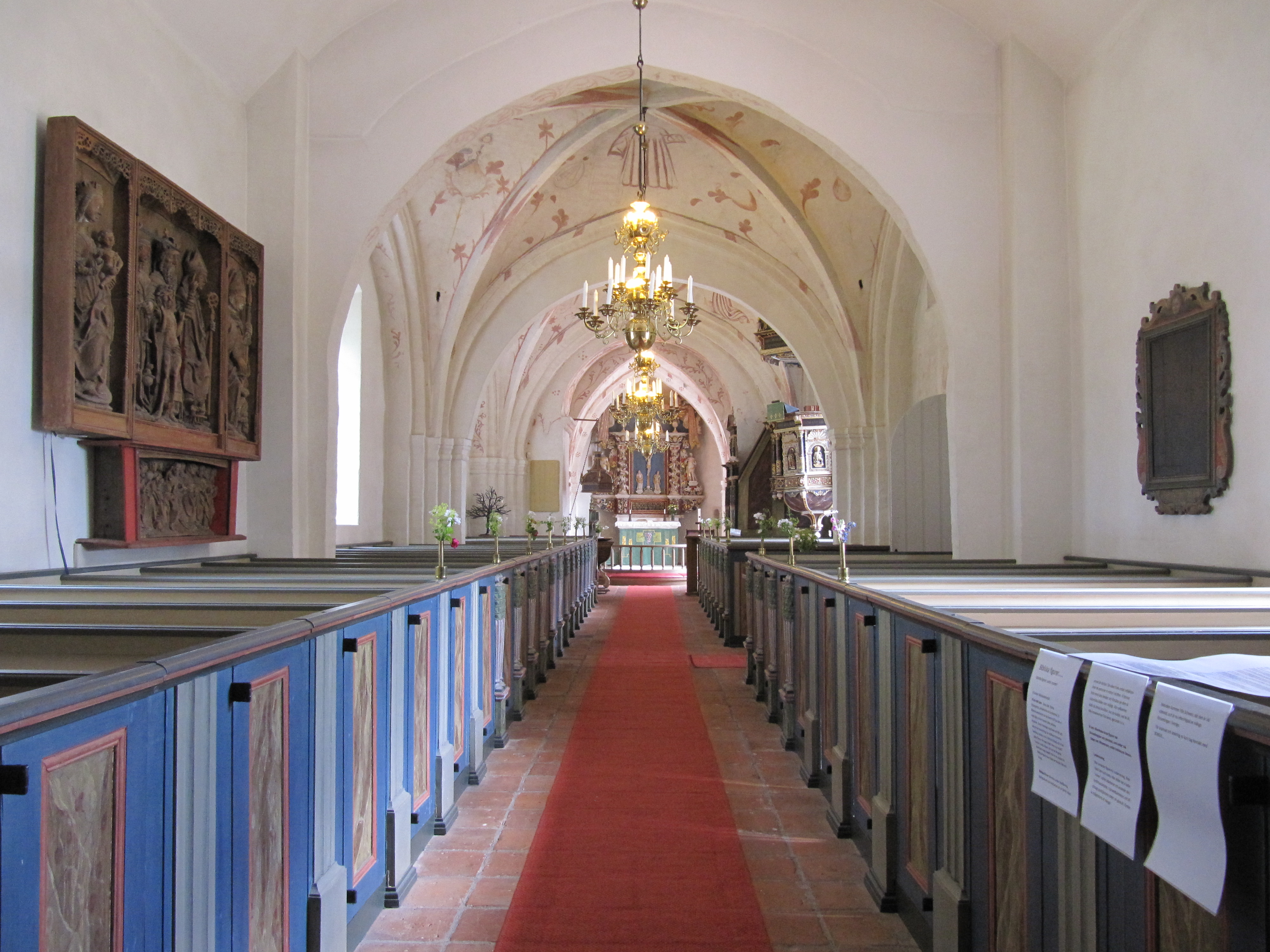Gualöv Church on:
[Wikipedia]
[Google]
[Amazon]
Gualöv Church ( sv, Gualövs kyrka) is a medieval church in
 Gualöv Church contains medieval murals from two periods. The oldest are Romanesque in style and are located in the
Gualöv Church contains medieval murals from two periods. The oldest are Romanesque in style and are located in the
Gualöv
Gualöv is a locality
Locality may refer to:
* Locality (association), an association of community regeneration organizations in England
* Locality (linguistics)
* Locality (settlement)
* Suburbs and localities (Australia), in which a locality i ...
, Bromölla Municipality, in the province of Skåne, Sweden. The church contains several medieval murals and a medieval altarpiece.
History
Gualöv Church was built during the end of the 12th century. Achurch porch
A church porch is a room-like structure at a church's main entrance. A porch protects from the weather to some extent. Some porches have an outer door, others a simple gate, and in some cases the outer opening is not closed in any way.
The porch ...
was built in the 14th century, and during the 15th century the earlier ceiling was replaced by the present vaults. The church bell
A church bell in Christian architecture is a bell which is rung in a church for a variety of religious purposes, and can be heard outside the building. Traditionally they are used to call worshippers to the church for a communal service, and to ...
s are housed in a separate, wooden tower probably dating from the 18th century. Some alterations were made to the church in the 19th century.
Murals
 Gualöv Church contains medieval murals from two periods. The oldest are Romanesque in style and are located in the
Gualöv Church contains medieval murals from two periods. The oldest are Romanesque in style and are located in the choir
A choir ( ; also known as a chorale or chorus) is a musical ensemble of singers. Choral music, in turn, is the music written specifically for such an ensemble to perform. Choirs may perform music from the classical music repertoire, which sp ...
. They depict a knight
A knight is a person granted an honorary title of knighthood by a head of state (including the Pope) or representative for service to the monarch, the church or the country, especially in a military capacity. Knighthood finds origins in the Gr ...
and a woman, and an inscription in Latin
Latin (, or , ) is a classical language belonging to the Italic branch of the Indo-European languages. Latin was originally a dialect spoken in the lower Tiber area (then known as Latium) around present-day Rome, but through the power of the ...
stating that this is the portrait of Hugitus and his wife Hialmsvith, who ordered the decorating of the church. It has been suggested that the same couple probably ordered and financed the building of the church. In addition, the choir and nave
The nave () is the central part of a church, stretching from the (normally western) main entrance or rear wall, to the transepts, or in a church without transepts, to the chancel. When a church contains side aisles, as in a basilica-type ...
also contain murals from the 1470s, depicting religious subjects such as the Last Judgment and the Nordic royal saints Olaf
Olaf or Olav (, , or British ; Old Norse: ''Áleifr'', ''Ólafr'', ''Óleifr'', ''Anleifr'') is a Scandinavian and German given name. It is presumably of Proto-Norse origin, reconstructed as ''*Anu-laibaz'', from ''anu'' "ancestor, grand-father" a ...
, Eric
The given name Eric, Erich, Erikk, Erik, Erick, or Eirik is derived from the Old Norse name ''Eiríkr'' (or ''Eríkr'' in Old East Norse due to monophthongization).
The first element, ''ei-'' may be derived from the older Proto-Norse ''* ain ...
and Canute
Cnut (; ang, Cnut cyning; non, Knútr inn ríki ; or , no, Knut den mektige, sv, Knut den Store. died 12 November 1035), also known as Cnut the Great and Canute, was King of England from 1016, King of Denmark from 1018, and King of Norwa ...
, but also e.g. the Wheel of Fortune. There are also fragments of decorative paintings in the church porch.
Furnishings
The main altarpiece of the church is from 1704, but the church also contains an altarpiece from the 1510s, displayed on one of the nave walls. It was most likely made in norther Germany. The baptismal font and the pulpit both date from the 17th century.References
External links
* {{DEFAULTSORT:Gualov Church Churches in Skåne County Churches in the Diocese of Lund Church frescos in Sweden